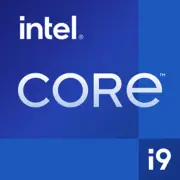Intel Core i9-10940X X-series

Intel Core i9-10940X X-Serie: Umfassender Prozessor-Überblick für Profis (2025)
Relevanz, Leistung und Empfehlungen für den Bau
1. Hauptmerkmale: Architektur Cascade Lake X
Der Intel Core i9-10940X Prozessor, der Ende 2019 veröffentlicht wurde, bleibt auch im Jahr 2025 eine Nischenlösung für Enthusiasten und Profis. Trotz seines Alters zeigt die Cascade Lake X Architektur im 14-nm Prozess stabile Leistung bei ressourcenintensiven Aufgaben.
Schlüsseldaten:
- Kerngruppen/Threads: 14/28 – ideal für parallele Berechnungen.
- Basisfrequenz: 3,3 GHz, mit Turbo Boost bis zu 4,8 GHz (bei 1-2 Kernen).
- Cache: 19,25 MB L3.
- TDP: 165 W – erfordert ernsthafte Kühlung.
- Leistung: Geekbench 6 – 1478 (Single-Core), 8635 (Multi-Core).
Besonderheiten:
- Unterstützung für Intel Turbo Boost Max 3.0 für automatisches Übertakten der „Gold“-Kerne.
- 72 PCIe 3.0-Linien – Möglichkeit zur Anbindung mehrerer GPUs oder NVMe-Laufwerke.
- Hardware-Schutz vor Spectre/Meltdown-Schwachstellen (Patches der 2020er Jahre).
2. Kompatible Motherboards: LGA 2066 Socket und X299 Chipsätze
Der Prozessor verwendet den veralteten, aber zuverlässigen LGA 2066 Socket. Geeignete Chipsätze sind Intel X299, die immer noch im Verkauf erhältlich sind (neue Modelle kosten ab 250 $).
Beliebte Platinen 2025:
- ASUS ROG Rampage VI Extreme Encore (450 $) – Spitzenmodell mit Wi-Fi 6E und 10 Gbit LAN.
- GIGABYTE X299X Designare 10G (400 $) – für Workstations (Thunderbolt 3 Unterstützung).
- MSI X299 PRO (300 $) – budgetfreundliche Option mit grundlegenden Funktionen.
Auswahlmerkmale:
- Überprüfen Sie die Unterstützung für 4-Kanal DDR4 – dies ist entscheidend für das Potenzial der CPU.
- Suchen Sie nach Platinen mit VRM-Modulen von mindestens 12 Phasen – der Prozessor ist beim Übertakten „durstig“.
3. Speicher: DDR4-2932 und 4-Kanal Mode
Der i9-10940X unterstützt nur DDR4 (bis zu 256 GB, 2933 MHz). DDR5 und neuere Standards sind aufgrund architektonischer Einschränkungen nicht verfügbar.
Empfehlungen:
- Verwenden Sie 4 oder 8 Module, um den 4-Kanal-Modus zu aktivieren (Leistungssteigerung von bis zu 15 % beim Rendern).
- Optimale Sets: Crucial Ballistix MAX DDR4-4400 (2×16 GB, 150 $) mit manuellem Übertakten.
4. Netzteil: Mindestens 750 W und Leistungsreserve
Unter Berücksichtigung der TDP von 165 W und den Anforderungen der Grafikkarten im Jahr 2025 (z.B. NVIDIA RTX 5070), wählen Sie das Netzteil:
- 750-850 W für Systeme mit einer GPU.
- 1000 W+ für Konfigurationen mit 2-3 Grafikkarten oder Mining-Rigs.
Top-Modelle:
- Corsair RM850x (2025) – 80+ Gold, voll modular (140 $).
- Seasonic PRIME TX-1000 – 80+ Titanium, 12 Jahre Garantie (300 $).
5. Vor- und Nachteile: Für wen relevant im Jahr 2025?
Vorteile:
- Multithread-Leistung: Konkuriert mit Ryzen 9 7900X beim Rendern.
- Stabilität: Bewährte X299-Plattform ohne „Kinderkrankheiten“.
- Übertaktungspotenzial: Bei guter Kühlung sind 4,6 GHz auf allen Kernen erreichbar.
Nachteile:
- Veralteter Prozess: 14 nm vs. 5 nm bei AMD Ryzen 8000.
- Hoher Stromverbrauch: Die Stromrechnung wird bei 24/7 Belastungen merklich spürbar.
- Preis: Neue Modelle kosten 600-700 $ – teurer als der Ryzen 9 7900X (550 $).
6. Nutzungsszenarien: Nicht für Spiele!
- Arbeitsaufgaben:
- 3D-Rendering in Blender, Cinema 4D.
- Virtualisierung (VMware, Hyper-V).
- Videocodierung in DaVinci Resolve.
- Multimedia:
- Audioverarbeitung in Ableton Live mit Dutzenden von Plugins.
- Spiele:
- Mittlere FPS in Cyberpunk 2077 (1440p Ultra) – 75-90 mit RTX 4070. Unterlegen gegenüber Ryzen 7 7800X3D (120+ FPS).
7. Wettbewerber: Ryzen und moderne Xeon
- AMD Ryzen 9 7900X (550 $):
- 12 Kerne/24 Threads, 5,6 GHz, 170 W.
- Geekbench 6 Multi-Core – 11200 (+30%).
- Intel Xeon W-1370P (800 $):
- 8 Kerne/16 Threads, aber Unterstützung für ECC-Speicher.
- Fazit: Der i9-10940X gewinnt nur in Aufgaben, die mehr als 12 Kerne erfordern.
8. Tipps zum Zusammenbau: Kühlung und Gehäuse
- Kühler:
- NZXT Kraken X73 (360 mm AIO, 180 $) – Temperatur unter Last ≤75°C.
- Noctua NH-D15 (110 $) – Luftkühlung für moderates Übertakten.
- Gehäuse:
- Mindestens 6 Lüfter (Lian Li Lancool III, 170 $).
- Zusätzlich:
- Wärmeleitpaste Thermal Grizzly Kryonaut (15 $).
9. Fazit: Für wen ist der i9-10940X im Jahr 2025 geeignet?
Dieser Prozessor sollte nur in zwei Fällen in Betracht gezogen werden:
1. Upgrade eines alten Systems auf X299 ohne den Austausch des Motherboards.
2. Budget-Workstation – wenn ein neues Modell mit Rabatt gefunden wird (500-600 $).
Für Neubauten wäre es sinnvoller, den AMD Ryzen 9 7900X oder den Intel Core i7-14700K zu wählen – sie bieten eine bessere Energieeffizienz und Unterstützung für PCIe 5.0. Dennoch bleibt der i9-10940X ein Beispiel für ein „Arbeitstier“ für diejenigen, die Zuverlässigkeit und Multithreading ohne Überzahlung für Neuheiten schätzen.
Basic
CPU-Spezifikationen
Speicherspezifikationen
Verschiedenes
Benchmarks
Im Vergleich zu anderen CPUs
In sozialen Medien teilen
Oder verlinken Sie uns
<a href="https://cputronic.com/de/cpu/intel-core-i9-10940x-x-series" target="_blank">Intel Core i9-10940X X-series</a>